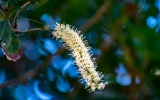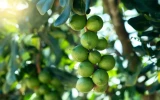How Many Nuts Does a Macadamia Tree Produce? (In KG & Lbs)
The macadamia tree is known for being a prolific producer of tasty macadamia nuts. However, it's often debatable how much a single tree can produce. In this article, we will shed light on how many nuts a macadamia tree produces, in kilograms and pounds, to give you a clear picture of the tree's yield potential.
A macadamia tree produces around 50–80 kg (110–176 lbs) of nuts every year. If you're growing macadamia trees for commercial purposes, you can expect a mature tree to produce anywhere from 30 to 50 pounds of nuts per year, with yields increasing as the tree gets older.
The amount of nuts produced by a single macadamia tree can vary depending on the age and health of the tree, as well as environmental factors such as temperature and rainfall. Let's find out how these factors affect the yield potential of these trees.
Knowing realistic yield potentials can help guide orchard planning and financial projections when starting a macadamia farm from scratch.
Summary
- Macadamia integrifolia is renowned for its high yield of nuts, yielding approximately 50 kg (110 lbs) of nuts, and it's due to its substantial size, adaptability to diverse environmental conditions, and the high quality and desirability of the nuts it produces.
- Macadamia tetraphylla can produce around 40 kg or 88 lbs of nuts due to its adaptability to various soil and climate conditions, its rough-shelled nuts, and its high-value nuts with a slightly more robust and distinct flavor.
- Macadamia ternifolia is another prolific nut producer (yielding about 45 kg of nuts) due to its self-pollinating nature, and its high nut retention rate of high-quality nuts, making it a preferred choice for commercial cultivation.
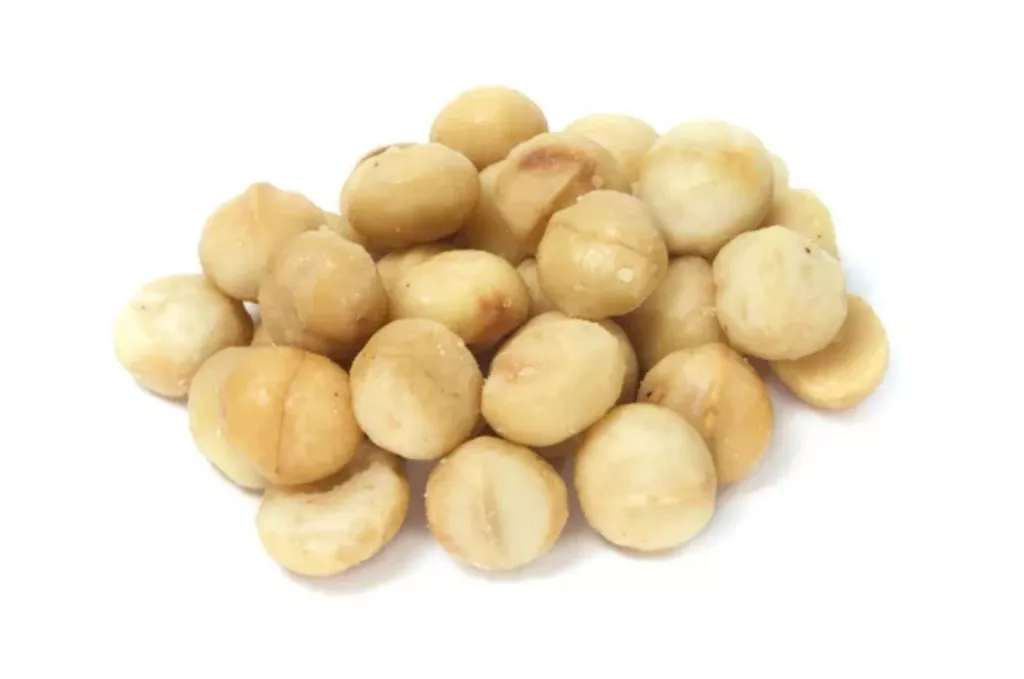
On this page:
Average Nut Yield for Different Macadamia Species
The table below presents the average nut yield of different Macadamia tree species:
| Macadamia Species | Estimated Nut Yield (kg) | Estimated Nut Yield (lbs) |
|---|---|---|
| Macadamia integrifolia | 50 kg | 110 lbs |
| Macadamia tetraphylla | 40 kg | 88 lbs |
| Macadamia ternifolia | 45 kg | 99 lbs |
Macadamia integrifolia is renowned for its high yield of nuts
Several defining characteristics of Macadamia integrifolia set it apart from other macadamia species and contribute to its impressive nut production:
Its growth habit and size are some of its key features
This species typically grows into a large tree, reaching heights of up to 15 meters (49 feet) with a spreading canopy. This substantial size allows the tree to support a significant number of nuts and contributes to its high yield potential.

It is known to adapt to a range of environmental conditions
It can thrive in diverse climates, including coastal regions and highland areas, and is capable of tolerating both drought and frost to some extent. This adaptability allows Macadamia integrifolia to be cultivated in various locations, further contributing to its overall nut production.
The nuts they produce are highly prized for their quality and flavor
They are characterized by their rich, buttery taste and smooth texture, making them a sought-after commodity in the global market. The high quality of the nuts adds to the desirability of cultivating these species for commercial nut production. You can learn more about the characteristics of Macadamia integrifolia in this article.
It has specific genetic characteristics that play a role in its high-yield potential
This species has been selectively bred and cultivated to enhance traits such as nut size, shell thickness, and overall productivity. Through ongoing breeding programs and genetic research, varieties of Macadamia integrifolia have been developed to maximize nut yield while maintaining desirable nut characteristics.
Macadamia tetraphylla is also recognized for its significant nut yield
Like Macadamia integrifolia, Macadamia tetraphylla possesses distinct characteristics that set it apart from other macadamia species and contribute to its impressive nut production:
Its growth habit and foliage is one of its defining features
This species is characterized by its rough-shelled nuts and its distinctive four-parted leaves, from which it derives its botanical name "tetraphylla." You can learn how to identify a Macadamia tetraphylla and other macadamia species in this guide.
The tree typically grows to a height of around 12 meters (39 feet) and has a spreading canopy, providing ample space for nut production.
It is adaptable to various soil and climate conditions
Macadamia tetraphylla is also known for its adaptability to different soil types and climatic conditions. It can thrive in a range of environments, including subtropical and temperate regions, and is capable of withstanding cooler temperatures compared to other macadamia species.
This adaptability allows for the cultivation of Macadamia tetraphylla in diverse geographical areas, contributing to its overall nut yield.
It produces high-value nuts
The nuts produced by these species are valued for their flavor and oil content. They are often considered to have a slightly more robust and distinct flavor compared to other macadamia varieties.
Additionally, the oil content in the nuts is an important factor for both culinary and commercial purposes, further enhancing the desirability of Macadamia tetraphylla for nut production.
Macadamia ternifolia is another prolific nut producer
Several defining characteristics set this species apart from other macadamia species and contribute to its prolific nut production:
It thrives in a range of environments
It thrives in a subtropical climate with well-drained soil and a moderate amount of rainfall. This adaptability allows it to be cultivated in various regions, contributing to its widespread commercial production.
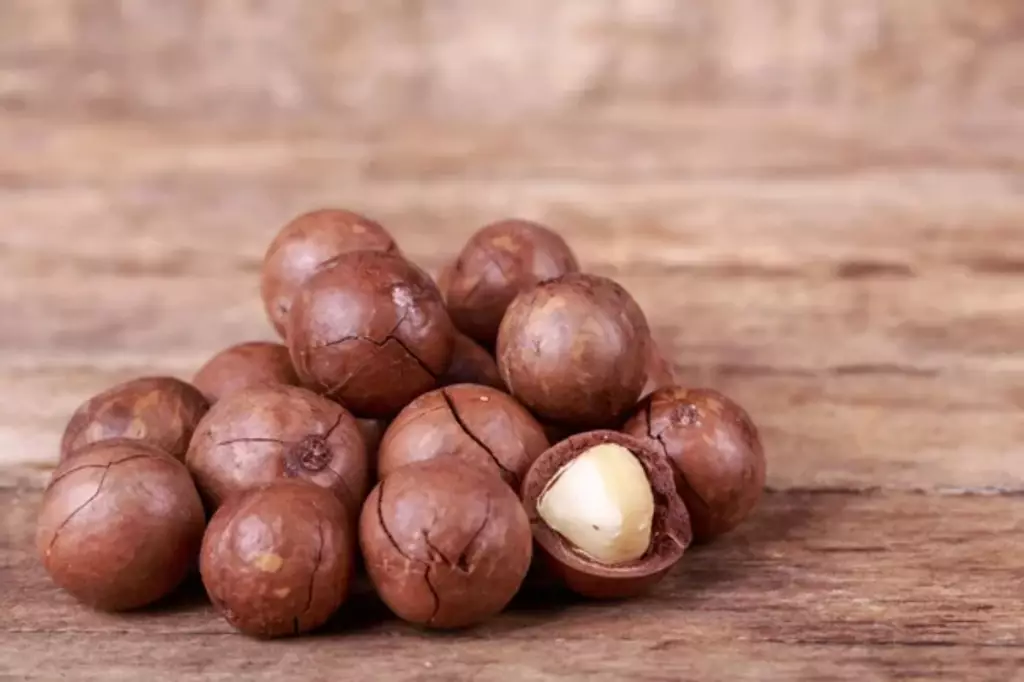
It is known for its self-pollinating ability
Macadamia ternifolia is known for its self-pollinating nature, which ensures consistent nut production even in the absence of specific pollinators.
This characteristic sets it apart from some other macadamia species that may require cross-pollination for optimal nut yield. To learn more about pollination in macadamias, you can read this article.
It exhibits a high nut retention rate of high-quality nuts
The species also exhibits a relatively high nut retention rate, meaning a larger proportion of the flowers develop into mature nuts. This trait contributes to the overall high yield of Macadamia ternifolia compared to other species within the genus.
Additionally, Macadamia ternifolia is valued for its relatively large nut size and excellent flavor profile, making it a preferred choice for commercial cultivation.
Estimated Nut Yield Based on the Tree's Age
The table below outlines the estimated nuts produced in pounds and kilograms based on the tree's age category:
| Tree Age | Estimated Nuts Produced (lbs) | Estimated Nuts Produced (kg) |
|---|---|---|
| Young | 0-20 | 0-9 |
| Mature | 50-150 | 23-68 |
| Old | 100-300 | 45-136 |
Young trees may not yield a significant harvest at first
Young macadamia trees, typically up to 5 years old, are in the early stages of nut production. During this period, the estimated nut yield ranges from 0 to 20 pounds or 0 to 9 kilograms.
This is because they are still developing their root systems and canopy structure, which are essential for supporting a substantial nut yield. Additionally, they are also establishing their nutrient uptake capabilities and may not yet have reached full production potential.
Growers need to provide proper care and maintenance to young macadamia trees to ensure healthy growth and development. This includes adequate irrigation, nutrition, pest and disease management, and appropriate pruning to encourage branching and flowering.
As the trees mature beyond the initial 5-year period, they are likely to exhibit increased nut production as they reach full maturity and optimal fruit-bearing capacity.
Mature macadamia trees have a higher estimated nut yield
Mature macadamia trees, typically between 5 to 12 years old, are known for their high nut yield, making them a valuable asset in the macadamia nut industry.
The estimated nut yield from these trees ranges from 50 to 150 pounds or 23 to 68 kilograms, indicating their prime nut-producing years.
During this stage of maturity, macadamia trees have established strong root systems and robust canopies, enabling them to efficiently absorb nutrients and sunlight, which are essential for nut development.
The trees have reached a stage where they can allocate substantial resources to nut production, resulting in higher estimated yields.
The prime nut-producing years of mature macadamia trees are vital for commercial growers as they aim to maximize their harvest. The increased yield during this period allows for higher production volumes, contributing to the economic viability of macadamia nut farming operations.
Additionally, the quality of the nuts during this stage is often optimal, with desirable characteristics such as size, flavor, and oil content, further enhancing their value in the market.

Furthermore, the consistent and substantial nut yield from mature macadamia trees supports the sustainability of the industry, ensuring a reliable supply of nuts for processing and distribution.
Old macadamia trees continue to be productive despite their age
Old macadamia trees, typically over 12 years old, have been observed to exhibit a higher estimated nut yield compared to younger trees.
The estimated nut yield from these older trees ranges from 100 to 300 pounds or 45 to 136 kilograms. This suggests that the productivity of macadamia trees does not significantly decline with age, and older trees can continue to yield a considerable amount of nuts.
One possible explanation is that as the trees mature, they develop a more extensive root system, which allows them to access a greater amount of nutrients and water from the soil.
Additionally, older macadamia trees may have developed a more efficient photosynthetic capacity and nutrient utilization, which enables them to allocate resources toward nut production.
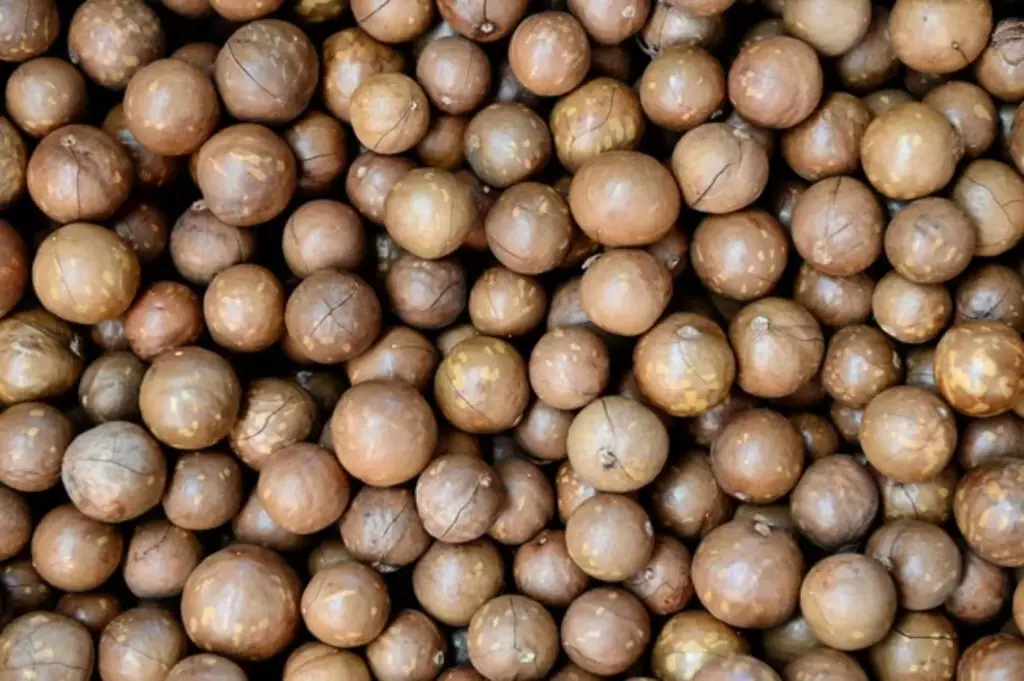
As trees age, they often undergo physiological changes that optimize their reproductive output, and this may contribute to the sustained nut yield observed in older macadamia trees.
Furthermore, certain macadamia cultivars may be inherently predisposed to maintain high nut yields as they age, and this genetic resilience could contribute to the observed pattern of sustained productivity in older trees.
